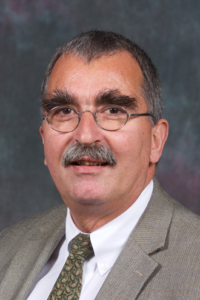
The end of March marks the end of the fiscal year. We all received our income statements. On this occasion, I would like to share with you some aggregate level data on GFT income in the Department and would be very interested in your comments.
Facts:
• The average total professional income of the roughly 200 GFT physicians working fulltime in our Department during the entire year in 2018 was $582k (median $480k); the variation between individual GFTs was wide, total professional income ranging from $133k to $1.6 million. Not unexpectedly, there are large differences between sections. However, GFT incomes differed by more than 3- (and up to 6- fold) also within several of our sections, despite these faculty members all working full time in the same subspecialty.
• The average total professional income of female GFTs was $501k (median $454k, range $144k-$1.2 million), that of male GFTs $523k (median $611k, range $133k-$1.6 million).
• The Department paid $744k to protect research time for 16 GFT members with a total professional income over $500k. To put these numbers into perspective:
• The annual salary of our UMFA colleagues at U of M ranges at the full professor level from $104k to $156k.
• The average income of Internal Medicine physicians across Canada was $389k in 2015/16, that of all Medical Specialists combined (GIM and its subspecialties) $347k
(CIHI, https://secure.cihi.ca/free_products/Physicians_in_Canada_2016.pdf).
Comments and questions:
I acknowledge that all of the above aggregate numbers cannot and should not be taken at face value; they are not granular enough to allow a definite interpretation or conclusions – but they make me think:
• Yes, some subspecialties or sub-subspecialties come with the inconvenience and stress of requiring more urgent and after hour work than their (often less invasive/interventional) counterparts. But does this really justify a several fold income difference between subspecialties, even more so between GFT colleagues working full time in the same subspecialty?
• Granted, female physicians may be more prevalent in lower billing subspecialties, at least, in part, explaining the gender difference of incomes. But is this the full explanation, and if it is, why are women ending up more frequently in lower billing subspecialties?
• Sure, some may argue that every researcher’s protected time should be valued equally, regardless of their clinical earnings. But is it really justifiable for the Department to invest its limited salary resources for protecting research time for faculty who earns half a million dollar or more through billings for their (part-time) clinical activities?
• Sure, other professions such a lawyers may make comparable amounts of money, but aren’t our incomes high by national (and international) standards in Medicine? Even more so, if the cost of living (of housing, in particular) in Winnipeg vs. metropolitan areas such as Toronto or Vancouver is taken into account? BTW our GFT expenses are lower than elsewhere, as unlike at UHN/U of T’s Dept. of Medicine for example, there is support for travel of faculty, faculty members do not have to lease their office space from the hospital/university at an every year increasing “fair market price”, pay for their own administrative assistant’s salary, AND pay 25% overhead to the practice plan (which increases to 40% for those billing more than a certain amount).
Collectively, this all seems to me to illustrate how privileged our situation in Manitoba still is. Asking for more $ and for extra, additional re-imbursement for every single task that comes with an academic job such as participating in teaching and collaborating in innovation is, in my opinion, putting this privilege at risk.
Finally, and on a more general note: as academic physicians in the Canadian health care system we are paid by and accountable to the taxpayer. We need to be able to justify our income to this public. Would we really be in a position to do so – and with which argument(s)?


 Have you ever looked from very closely at an oil painting, perhaps from a few inches away? You will see, colours, lines, the texture of a brush stroke, but will have difficulties identifying the object(s) depicted, not to speak of appreciating the entire composition. You have to step back, create some distance, to stand not too close, but not too far away either; you need to stand in just the right distance to appreciate the art-work in its entirety.
Have you ever looked from very closely at an oil painting, perhaps from a few inches away? You will see, colours, lines, the texture of a brush stroke, but will have difficulties identifying the object(s) depicted, not to speak of appreciating the entire composition. You have to step back, create some distance, to stand not too close, but not too far away either; you need to stand in just the right distance to appreciate the art-work in its entirety.